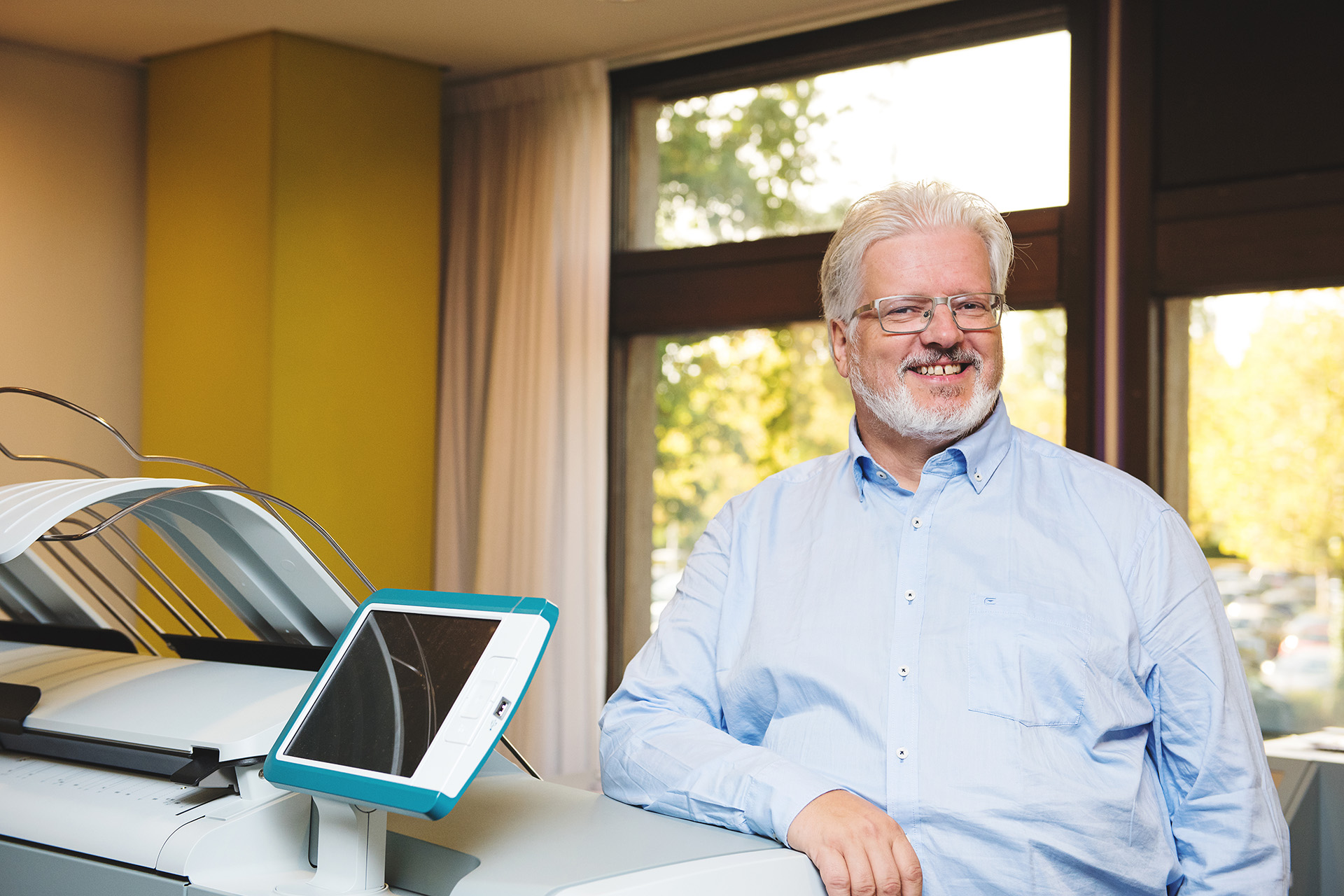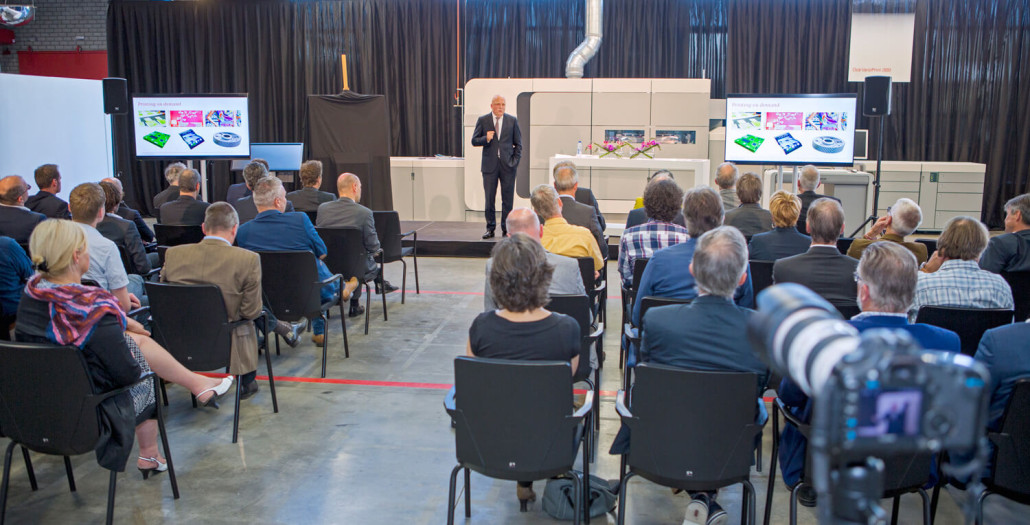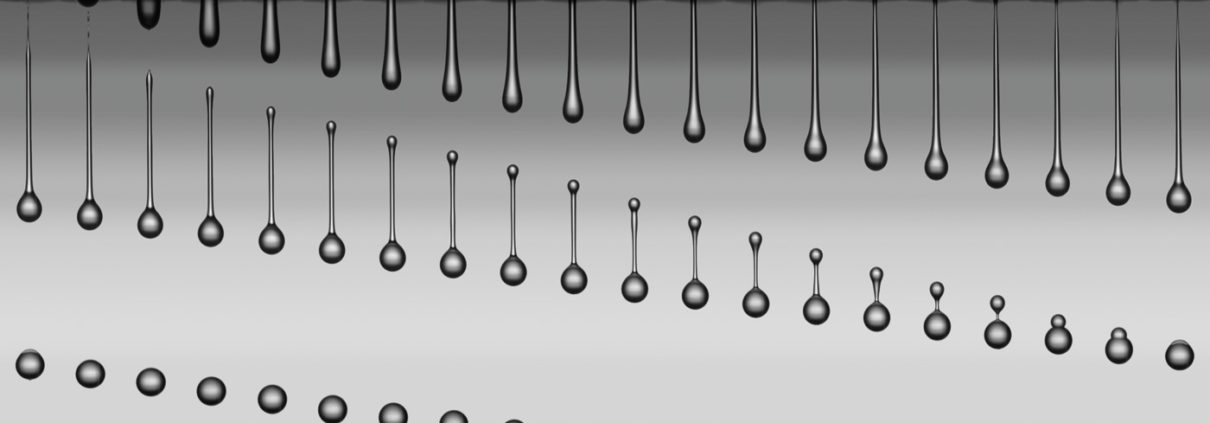How do fluids flow?
How do fluids behave and interact with their environment? New research seeks to get to the bottom of the mathematics behind fluid dynamics.
If successful, this will open up new perspectives for inkjet printing – and much, much more. Fundamental advances in fluid dynamics will help improve scientists’ understanding of a vast range of phenomena: from cloud formation and ocean acidification to blood flow in the human heart and even the nature of black holes.
Time to find answers
Fluid dynamics describe the way fluids – both liquids and gases – behave. It’s hardly a new field of study: its basic principles were formulated decades or even centuries ago. Yet the detailed mathematics of fluid dynamics are in many cases still unclear. An authority in the field, professor Eberhard Bodenschatz, recently said “it’s high time that physics really got to grips with the fundamentals of this field” [source].
The good news is that researchers around the world, including Bodenschatz himself, have taken up the challenge. Four leading research groups in Germany and the Netherlands recently joined forces to tackle some of the most fundamental questions in fluid dynamics.
Tiny labs and self-cleaning surfaces
Such research is important in its own right, but also as a key to unlocking all kinds of technological innovations. For example, researchers are exploring how the nanostructure of a surface affects the spread of fluids, which would make it possible to develop self-cleaning surfaces. A better understanding of how complex fluids behave, can boost the development of ”labs-on-a-chip”: miniaturized laboratories for on-the-spot analysis of tiny amounts of blood or other fluids.

Fundamental advances in fluid dynamics will help improve scientists’ understanding of a vast range of phenomena such as blood flow in the human heart.
Turbulence? What turbulence?
Another area many researchers focus on is turbulence. Scientists have long assumed that there is only one state of turbulence, governed by the same set of laws and formulas. But, perhaps unsurprisingly, reality is more complicated than that. Data suggests that there are different kinds of turbulence, and that fluids can make the transition to what researchers call ‘ultimate turbulence’, when a whole new set of mechanisms kicks in.
New horizons for inkjet printing
Océ closely monitors and participates in such fundamental research. “We have long believed that inkjet printing has massive, untapped potential for the global printing industry, and inkjet printing is pure fluid dynamics”, says prof. dr.ir. Herman Wijshoff, professor at Eindhoven University of Technology and researcher at Océ. “It’s all about manipulating fluids and understanding how they behave and interact with different materials. And while I believe we’re at the forefront of what’s technically possible right now, I’m also convinced that with a more detailed understanding of fluid dynamics, we can take the technology much further.”
Ready to challenge offset?
Examples? “Jetting technology has achieved amazing performance levels. A single nozzle in a high speed printhead can jet more than tens of thousands of drops per second with extreme accuracy. This means inkjet printing is rapidly becoming an attractive alternative for offset printing, a huge global market worth hundreds of billions of euros. A better understanding of fluid dynamics will help us further increase the speed of inkjet printing without compromising print quality.”

“With a more detailed understanding of fluid dynamics, we can take inkjet technology much further.” – Herman Wijshoff
Moving off the page
Even more intriguingly, inkjet printing is already moving beyond ink and paper. “The technology is already being used to print onto tiles, wallpaper, panels wood and glass. Packaging in particular is an exciting market for inkjet printing. Taking it one step further, in the future we expect to be able to print functional fluids, such as OLED screen coatings or even biomaterials.”
Chasing secrets: FIP
These two perspectives – faster and more accurate printing and developing new applications for inkjet technology – are at the heart of an ambitious research program in which Océ participates: Fundamental Fluid Dynamics Challenges in Inkjet Printing, or FIP. It focuses on questions like drop formation, how to prevent bubbles from forming inside the ink channels, as well as the interaction between ink or more complex fluids with different types of substrate.

Anton Schaaf, CEO, Océ Holding B.V. during the official kickoff of the FIP program at Océ headquarters in Venlo, the Netherlands.
Professor Detlef Lohse, a world-renowned researcher in the physics of fluids, coordinates the FIP program and is excited about its potential. “You might think we have discovered all the secrets of inkjet technology, but we haven’t. For example, we don’t know how much faster the jetting process can become before it becomes unstable.” [4] For years this could be regarded as a purely theoretical question. But as jetting speeds get higher and higher, it’s rapidly becoming a very relevant issue.
Trial and error? No thanks
For Océ, meanwhile, approaching such questions through fundamental research has real advantages. Herman Wijshoff: “Understanding the underlying physics means we can develop more accurate models and simulations, making us less reliant on trial and error. It means fewer prototypes, faster and better results. In short, it gives us a head start in taking inkjet printing to the next level.”
Curious?
Curious to find out more about fluid dynamics and its relevance for our everyday lives – as well as for the future of inkjet printing? Keep an eye out for a special edition of our INNOVATE magazine, which will focus on the fascinating world of fluid dynamics.
Related Posts
Océ enters the packaging market with the Océ LabelStream 4000 series
05/06/2018 NewsOcé entered the packaging and label printing market with the launch of the Océ LabelStream 4000 series. An industrial-scale UV inkjet press with optional flexo printing, embellishment and finishing units.
Learn moreOcé and partners invest in future of inkjet technology
26/07/2017 Press ReleasesOn Tuesday September 27th, the official kickoff of a €6.3 million inkjet research program took place at Océ headquarters in Venlo, the Netherlands.
Learn more







